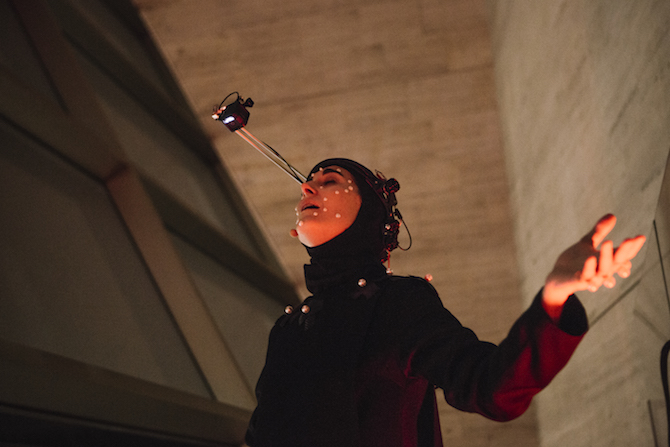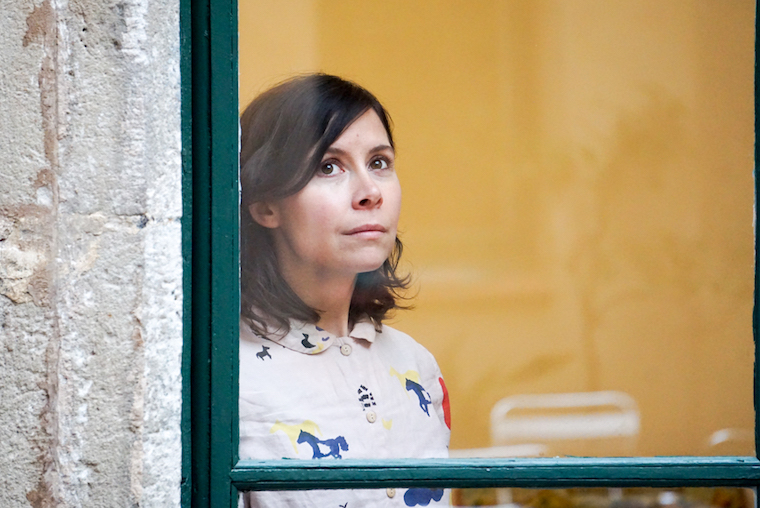Search
To search for an exact match, type the word or phrase you want in quotation marks.
A*DESK has been offering since 2002 contents about criticism and contemporary art. A*DESK has become consolidated thanks to all those who have believed in the project, all those who have followed us, debating, participating and collaborating. Many people have collaborated with A*DESK, and continue to do so. Their efforts, knowledge and belief in the project are what make it grow internationally. At A*DESK we have also generated work for over one hundred professionals in culture, from small collaborations with reviews and classes, to more prolonged and intense collaborations.
At A*DESK we believe in the need for free and universal access to culture and knowledge. We want to carry on being independent, remaining open to more ideas and opinions. If you believe in A*DESK, we need your backing to be able to continue. You can now participate in the project by supporting it. You can choose how much you want to contribute to the project.
You can decide how much you want to bring to the project.
![ACTO 1 [La Incertidumbre], TOUR DE FORCE. Una coproducción del CCCB y la Fundación Han Nefkens © Joan Morey, 2017 | FotografÃa de documentación: Joan Deulofeu](https://a-desk.org/wp-content/uploads/2017/04/ACTE1-B-595x397.jpg)
There’s marginality because there is a centre and an element that delimits and distinguishes them; even though it’s true this delimitation can be porous and even reversible, such that on occasions the marginal becomes dominant and vice versa. The exhibition 1000 m2 of desire. Architecture and sexuality at the CCCB, showed us amongst other things that urban planning and architecture often function as delimiting elements that distinguish what is normative and central from what is marginal and peripheral. And also how such distinctions are frequently constructed based on parameters of visibility: the imperative and the dominant is what we all see, while the marginal usually operates, by nature, in the dead zones and dark corners.
Within the framework of this exhibition, last 7 March there took place Tour de Force, a performance by the artist Joan Morey structured in a prologue and five acts that revised, through poetics and fragments, the history of Aids, an illness associated in many senses with the marginal, but very much related also to questions of normativity and control, regarding which the opposition between visibility and opacity or acceptance and rejection end up being extremely pertinent. Conscious of the contradictions and complexities through which Aids has travelled in relation to social, media and political considerations throughout the barely four decades of its official history, Joan Morey has conceived of Tour de Force as a polyhedral performative work. One that deliberately cancels the possibility of constructing a conclusive or total(itarian) story about the subject proposed, and causes each spectator to have only one view and partial experience of what happened in the performance.
Tour de Force began in the Mirador of the CCCB with a dramaturgical action in which the Aids virus itself, personified by the actress Anna Sabaté, realised a pathetic, soulful reading of texts by Antonin Artaud, taken from from Les nouvelles Révélations de l’être (1937) and Pour en finir avec li Jugement de dieu (1947), subtly modified by Morey himself. Even with all the public united in the same space, here the reception of the action was already fragmentary and partial, as depending on the place occupied by the spectator the view of the actress was intermittent, given that she moved through spaces that for a large part of the public fell out of view. While the embodiment of Aids realised her intense discourse, the spectators could see from their viewing tower how up to five limousines arrived at the CCCB, along with a group of performers, photographers and members of the technical team who circulated around the patio, with more or less distance between them. The experience in the Mirador was also altered by the intervention of other performers, who at a certain moment began to lead some people towards the patio of the building, where the limousines, in which the five later acts would begin, were parked.

There, each spectator had to direct themselves, in strict order, towards a woman who represented “Luck/Chance/Fate”, a performer (Silvia Arenas) dressed in black whose eyes were covered by a dramatic fringe, but who, like Tiresias thanks to her blindness participated passively in the destiny of those she had before her. In her hands she held a large black ball, the interior of which held balls numbered from 1 to 5, from which the spectator had to pick one without looking. The number of the ball extracted dictated the limousine to which the spectator had to get in and, as a result in which act they would participate.
Each limousine was a mobile stage (a cinematographic reference to the films Holy Motors, by Leos Carax, and Cosmopolis, by David Cronenberg) that undertook a different route through the city, heading to one or various enclaves in Barcelona related to the act represented in the vehicle’s interior. Each act corresponded to a specific period of the history of Aids and was executed by one or two performers for a reduced audience formed of only six spectators and a photographer. These acts had a simple but intense dramaturgical development, in which the characters functioned as allegorical figures. So in Act 1, it was a medical team, from the Public Health Agency of Barcelona, who practiced on the spectators who acquiesced a serological test of rapid detection for the HIV virus, in a journey that took them to the Estació de Francia, a place that symbolically alludes to journeys and a destination but also a controlled mobility. Even though the results from the test were available before the journey ended, to ensure confidentiality, they weren’t communicated to the interested parties until the following day. In Act 2, Transmission was a dancer with contortionist skills, Candela Capitán, who danced in close contact with the attendants while the limousine headed towards the slopes of Montjuic, with its well known cruising zones and hotels like La França, in which rooms are rented for hours. In Act 3, the role of the Illness was charged to the actor Tatín Revenga, who represented an Aids patient. Who, connected to a drip and dressed in a hospital robe, recounted his experiences to the six people in the limousine while it approached, by way of the port, the cemetery of Mountjuic. The performer of Act 4, the actress Antònia Jaume, embodied Theory (with reference to the scientific research into Aids but also to the philosophical and essayistic thought related to the body and the illness) by way of a script that reproduced fragments of the already mentioned film Cosmopolis,that was in turn based on the homonymous novel by Don DeLillo, in a journey along the Paseo de Gracia and its luxurious and blinding shop-windows. In Act 5 (in which I participated as a spectator) the poet Eduard Escoffet converted into a litany the dates and names of the different anti-retroviral drugs associated with the treatment of HIV approved by the FDA [[U.S. Food and drug administration]], in a sort of ironic cult to the utopian body and pharmaceutical control of the illness. The experience of the spectators was directly related to what happened in the act in which they participated, just as the knowledge of what happened in the other four acts was constructed based on what was told and retransmitted, in a dynamic that metaphorically alluded to contagion.
![ACTO 2 [La Transmisión], TOUR DE FORCE. Una coproducción del CCCB y la Fundación Han Nefkens © Joan Morey, 2017 | FotografÃa de documentación: Carlos Cabrera Hisado](http://a-desk.org/wp-content/uploads/2017/04/ACTE2-B.jpg)
As well as this allegorical dramaturgy, in Tour de Force there is also a vehicular axis tied to the gaze and the image, not simply because, as we said, the spectator has a partial vision of what occurred, so much as also because throughout the whole performance there are multidirectional tensions relating to these questions. The public of the Mirador can see what happens in the patio but from a distance, one that impedes intervention, converting them into passive observers. The spectators who reach the patio, meanwhile, are conscious of being observed by the abstract public of the Mirador, which they can’t see directly. While within the limousine, the people are driven by a driver who they also can’t see, and who in turn has little visual access to what is happening in the back part of the vehicle being driven, while the passenger themselves and the performer, can also gaze, protected by the dark glass of the limousine, at the passers-by who circulate anonymously through the city.
To this entanglement of gazes is added that of the multitude of cameras that record everything, from the closed circuit video camera born by the actress who acts as Virus in the Prologue, to the photographic and video cameras of the numerous documenters present in all the scenarios. And from amidst all these cameras and everybody’s eyes, from amidst all that can be seen or hidden, rises a crystalline architecture (that of the viewing tower of the building, that of the car windows and that of the camera lenses) Some glasses transparent others opaque, they configure this border area that determines what we see and what we don’t, what is inside and what is outside, what is central and what is left out on the margins.

Alexandra Laudo is an independent curator. In her projects she has explored, among others, issues related to narrative, text and the spaces of insertion between the visual arts and literature; the cultural history of the gaze; practices of resistance to the image in response to hypervisuality and oculocentrism developed from the visual arts and curatorship; and the 24/7 paradigm in relation to sleep, new technologies and the consumption of esimulants. Laudo has explored the possibility of introducing orality, peformativity and narration in the curatorial practice itself, through hybrid curatorial projects, such as performative lectures or curatorial proposals located between literary essay, criticism and curatorship.
Photo: Foto: © Ernest Gual
"A desk is a dangerous place from which to watch the world" (John Le Carré)